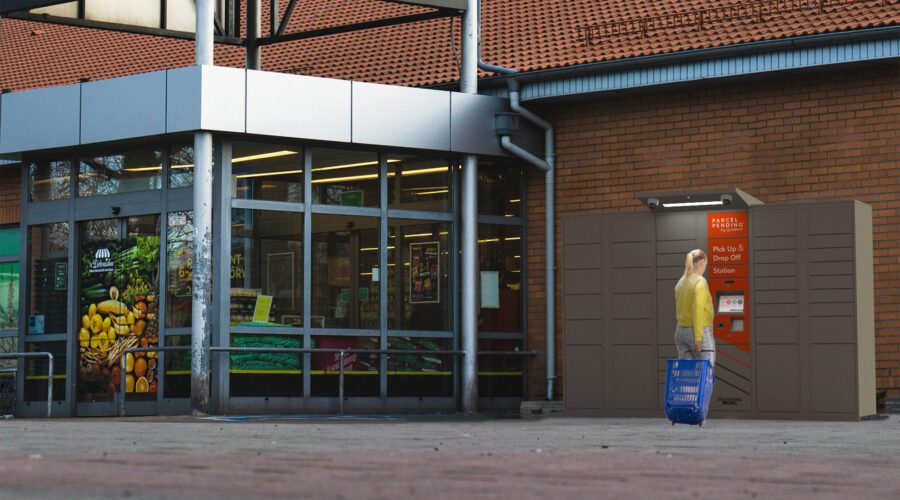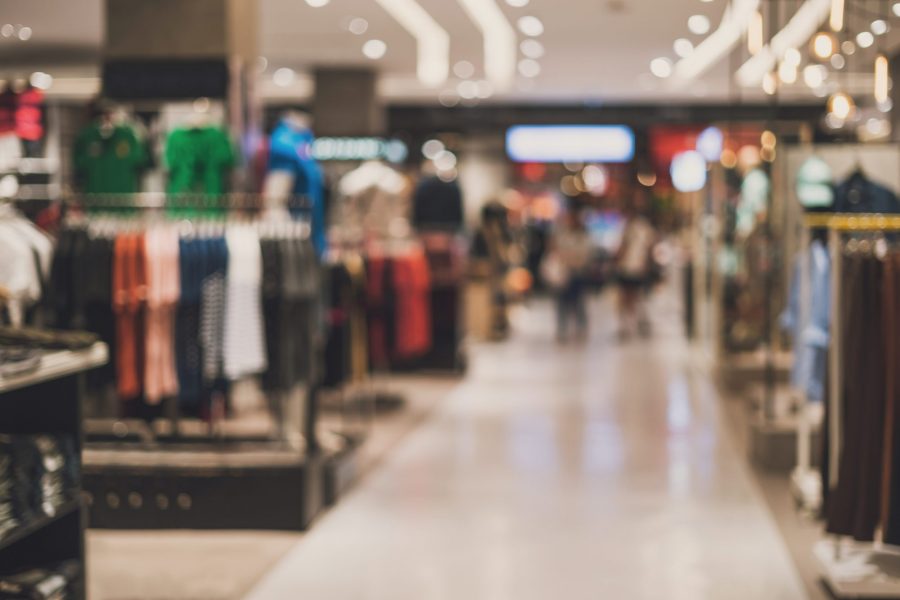Retail
The Future of Grocery Retail
Written by: Parcel Pending
9 Min Read
Published: February 18, 2019
Updated: March 29, 2023
Grocery retail is evolving and thanks to many of the new trends and innovations, grocery shopping has been made more convenient and less of a hassle for customers. Keeping up with these trends is vital for grocery retail success. With new offerings such as grocery delivery or buying online and picking up in store(BOPIS), customers are adapting to the shift from traditional grocery shopping.
The future of grocery retail is something that will, in one way or another,affect everyone and the way they shop. Some of the future trends, such as an explosion of grocery delivery services, are already in their nascent stages of growth. Others, such as an increased reliance on automation, have yet to see wide adoption in grocery retail. In this article, we’ll explore some of the most dominant trends that are shaping grocery retail.
Grocery retail is evolving and thanks to many of the new trends and innovations, grocery shopping has been made more convenient and less of a hassle for customers. Keeping up with these trends is vital for grocery retail success. With new offerings such as grocery delivery or buying online and picking up in store(BOPIS), customers are adapting to the shift from traditional grocery shopping.
The future of grocery retail is something that will, in one way or another, affect everyone and the way they shop. Some of the future trends, such as an explosion of grocery delivery services, are already in their nascent stages of growth. Others, such as an increased reliance on automation, have yet to see wide adoption in grocery retail. In this article, we’ll explore some of the most dominant trends that are shaping grocery retail.
These trends stand to transform grocery retail in ways that might be difficult to imagine today. Consumers can expect to see greater integration of technology into the grocery retail industry. While grocery retail has, for the most part, staved off the impact that online sales have had on traditional retail shopping, the future of grocery retail will be increasingly shaped by the way we shop online.
More Millennials Shopping
One overarching trend that is slated to shape the way we shop for groceries is the aging of the millennial generation. As an increasing number of millennials age and begin to start families, grocery shopping will take on greater importance. You might be wondering why this is important, given the fact that people age, enter their careers, and settle down all the time. One core reason why this is worth paying attention to is that millennials have demonstrated a desire to integrate technology into their lives, regardless of the industry.
Whereas older generations have been content to continue grocery shopping as they have in the past, millennials are more likely to gravitate towards shopping experiences that integrate technology into the shopping process. Put another way, retail grocery shopping that incorporates features traditionally associated with online shopping will find a more receptive audience with aging millennials.
Millennial disruption of the grocery industry has already begun to shape the products that we shop for in important ways. For example, beverage companies have struggled to attract millennials to drinks such as sodas, which are associated with being unhealthy. In response, some of the largest beverage companies are formulating new products with different ingredients, and advertising existing product lines in ways that tout the health benefits of the beverage. The result is more beverages on supermarket and convenience store shelves that have a dominant focus on health or provide some tangible benefit such as increased alertness, concentration, or energy.
The Growth of Online Grocery Shopping
Online grocery shopping is already a dominant force in Asia and India, yet growth in this sector has remained relatively slow in the United States. With less than 10% of households in the United States regularly grocery shopping online, and only 4% doing so once a week, going to an online portal to purchase your household groceries has yet to truly take off. According to a recent Nielsen report, roughly 37% of respondents in Asia regularly shopped for online groceries and had them delivered to their house. The statistics for the United States were gleaned from a recent Gallup poll that also demonstrated that Americans are split between the types of online grocery delivery services they like. Some American households prefer the convenience of meal prep kits, while others enjoy the convenience of having groceries delivered to their home. In contrast, shoppers in Asia clearly prefer ordering their groceries online and having them delivered.
Given the polling data, there are clearly challenges facing the growth of online grocery shopping in the United States. At the moment, the widespread acceptance of online shopping that is present across other retail spheres has yet to make its way to grocery retail. Nearly every predictor indicates that this trend is going to change in the coming years. One challenge that grocery retailers will face is attracting customers who value the convenience that online shopping offers without alienating individuals who prefer a more traditional shopping experience. A second challenge that grocery retailers are facing is how to get groceries to consumers that order online in a way that is both efficient and cost-effective. The two most common ways that grocery retailers are accomplishing this is through grocery delivery, or buy online, pick up in store (BOPIS). Let’s look at each of these in turn, as they will have a large impact on the future of grocery retail.
Grocery Delivery
Despite the fact that grocery delivery has had a relatively slow uptake in the United States, the delivery of perishable groceries has a long history. Consider the ubiquitous milkman of the early 20th century, who was relied upon to deliver fresh milk to households around the country. Despite its old roots, grocery delivery still has some growing pains to go through. One of the challenges that grocery retailers are facing is in finding cost-effective methods of delivering groceries to consumers. Amazon has begun exploring same-day grocery delivery in certain urban markets with the Amazon Fresh program, and are hoping to be able to leverage their shipping model to capitalize on the fresh grocery delivery market.
At a basic level, the challenge facing grocery delivery isn’t customer acceptance, but rather figuring out how to reduce last mile delivery costs. Last mile logistics represent a significant hurdle for grocery retailers regardless of size, as the costs associated with bringing groceries to residential addresses have limited widespread adoption of this service. As the technology supporting grocery delivery matures the associated costs of delivering groceries should diminish as well. Read our related blog about how to improve last mile logistics.
There are also challenges with getting recipients to trust the delivery of perishable goods. Not only do shoppers not get to personally select food items, but how do they know that the grocery products won’t go bad by the time they get home? On top of this, most people don’t want their grocery delivery being left by the front door like a normal package. The solution is through the use of refrigerated grocery lockers which allow customers to pick up their order when it’s convenient for them. At the same time, refrigerated lockers reduce final mile delivery costs, making them a good idea for retailers as well.
In-Store Pickup
The BOPIS model that has proven so successful in other retail environments is slowly seeing widespread adoption in the grocery retail market. What is BOPIS in retail? In-store pickup options for online grocery purchases is a trend that is expected to continue growing in the coming years, so keep an eye on it. Chances are your preferred local grocery store already offers some type of grocery pickup provided they offer online grocery shopping.
The advantages of in-store pickup for grocery retailers is that it reduces costs associated with last mile delivery, while also offering customers convenience. Challenges in this area include how to streamline the pickup process so that customers don’t have to wait to get their orders. One way that retailers are accomplishing this is through the use of smart refrigerated locker systems that automate the notification and retrieval process once a store associate has assembled the order.
Bringing the Online Shopping Experience to Stores
One significant way that grocery retail is expected to change in coming years is through the incorporation of features currently relegated to the online shopping experience. These features typically enhance the convenience of the shopping experience as a whole. For example, many grocery retailers are already introducing programs to accept mobile payment options, such as Apple Pay and Google Pay. These payment options may be more familiar and comfortable for younger shoppers to use, so expect to see their use increase in the coming years as younger shoppers grow older and shop for groceries more often.
The integration of intelligent applications into the shopping experience isn’t consigned solely to payment options. Increasingly, applications are being used to curate a technologically integrated shopping experience. Some stores now offer an app to guide you to specific items you are looking for so you don’t have to wander around the store or ask a sales associate. You may soon be able to ask a robot for assistance rather than dealing with a store associate, which is similar to the machine-driven chat interfaces used on many popular online shopping portals. Summed up, these changes amount to a fusion of online and retail shopping experiences. Services that we have come to take for granted in the online shopping sphere, such as ease of finding items and a streamlined checkout process that allows for multiple different payment types, will become increasingly commonplace in grocery retail in the coming years.
Enhanced Automation
Robots in the grocery store may sound far-fetched, but in reality, you may begin to see machines performing many of the tasks you see store associates doing today. Retailers of all kinds, grocery stores included, are exploring ways to streamline operations through the use of robotics and automation. Some grocery stores have already begun utilizing robots to periodically check shelves to notify store associates when products are running low. The days when nearly all product stocking is done by machines is not that far off. The use of robots, referred to by the acronym AMR which stands for “autonomous mobile robots,” is already beginning to spread within our supply chain itself, such as in distribution centers, so it isn’t unforeseeable that this will extend out to the end of the supply chain within the coming years.
Integration of Big-Data
One of the ways that grocery retailers will begin infusing their shopping experience with technological innovation is through the use of big data. Data on what shoppers want and desire is the name of the game in the online and retail shopping sphere, yet the grocery industry has been slow to pick up on this trend. With Amazon’s foray into grocery retail with the recent purchase of Whole Foods in 2017, grocery retailers of all sizes realized they had to quickly figure out ways to stave off inroads by the giant online retailer who holds the competitive advantage.
In an effort to challenge Amazon at their own game, select grocery retailers have begun incorporating a host of technologies into the grocery retail space to both enhance the services they provide customers and to collect as much data as they can about their shopping habits. The hope is that through the use of comprehensive data collection, grocery retailers can gain insights into consumer shopping patterns and better serve their customers. If this trend extends into the future as it is expected to, don’t be surprised to have a retail grocery shopping experience where product recommendations are made to you in real-time using your past purchasing history.
Final Thoughts
As you may have noticed, many of the trends we have forecast for the future of grocery retail are already here in one form or another. While most are present in pilot programs around the country, expect to see more widespread adoption as the technologies supporting them mature. Of course, no one truly knows what the future holds. That being said, we will almost certainly see greater integration of technology into the retail grocery space. This includes the use of automation to reduce retail overhead and streamline operations, as well as retailers gleaning and utilizing big data to personalize and curate an individualized shopping experience.
Services that offer customers convenience will continue to be king. These include grocery delivery services, which are projected to grow substantially in the coming years. Also, expect to see more widespread use of refrigerated lockers as an increasing number of grocery retailers fuse the online and retail shopping experience through in-store pickup options.



